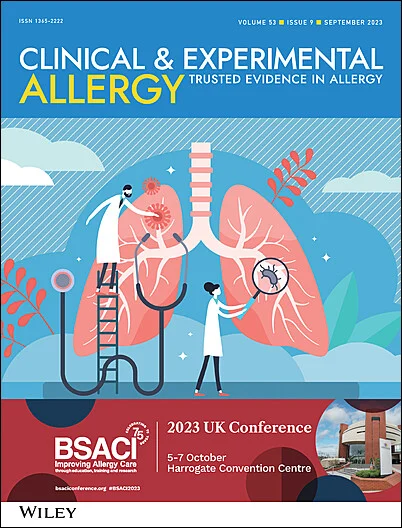Defining Optimal Basophil Passive Sensitisation Parameters
Abstract
Background
Detecting drug-specific IgE (sIgE) is crucial for diagnosing immediate drug-induced hypersensitivity reactions. Basophil activation tests serve as a method to determine the presence of drug-sIgE, highlighting the importance of optimising the assay. Optimisation involves considering multiple factors to ensure sensitisation helps detect an antigen sIgE. The study investigates the complex factors influencing basophil responsiveness thresholds and aims to provide rules-of-thumb guidance for expected results.
Methods
Open and occupied FcεRI receptors were analysed by flow cytometry pre- and postdissociation of surface-bound sIgE. Basophils were then sensitised with serial concentrations of penicillin (BPO)-sIgE in serum or buffer and incubated for 1, 4 and 18 h with or without D2O and/or IL-3. Basophil sensitivity was evaluated based on FcεRI receptor densities, sIgE/total IgE (tIgE) ratios, responses to BPO(21)-HSA, and D2O and/or IL-3 effects, with maximal responses determined using anti-IgE human antibodies. These optimised conditions were tested with peanut-sIgE and cat-sIgE sera.
Results
Basophils from five donors were used. The FcεRI receptor expression initially averaged 155,000/cell (47,000–344,000/cell), with 35% (5%–79%) unoccupied, which postdissociation increased to 98% (82%–100%) unoccupied. Upon sensitisation, the average reloading with BPO-sIgE was 39% (33%–48%). The ED50 (a measure of cellular sensitivity) was approx. 6000 BPO-sIgE/cell, and the average maximal anti-IgE antibody response was 58% (25%–68%). A 4-h sensitisation at 4°C with IL-3 pretreatment and 70% D2O allowed the detection of BPO-sIgE/tIgE ratios as low as 0.02%–0.05% without spontaneous histamine release. Under the same conditions, responses were detected with 0.33% peanut-sIgE and 0.1% cat-sIgE ratios.
Conclusion
This study outlines a method to assess basophil sensitisation, emphasising the minimum sIgE/tIgE ratio needed for basophil responsiveness. It considers factors like FcεRI open/unoccupied FcεRI receptors, sIgE/tIgE ratios and the effect of D2O and IL-3. This sets a strong foundation for refining and advancing basophil activation functional assays.


 求助内容:
求助内容: 应助结果提醒方式:
应助结果提醒方式:


